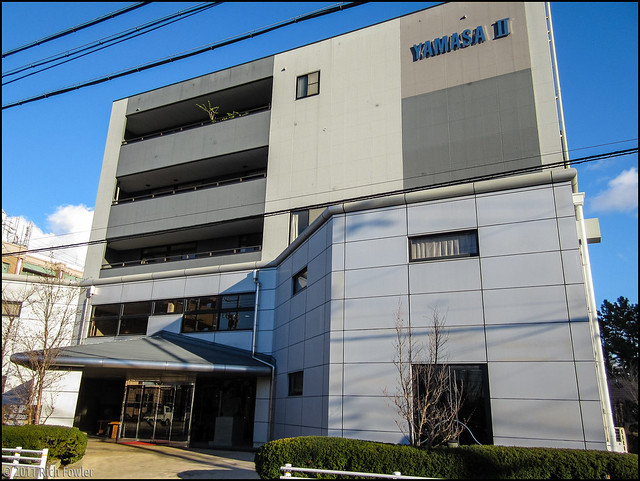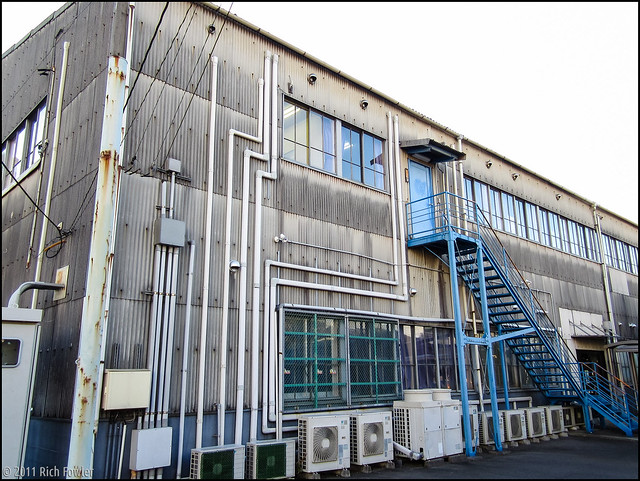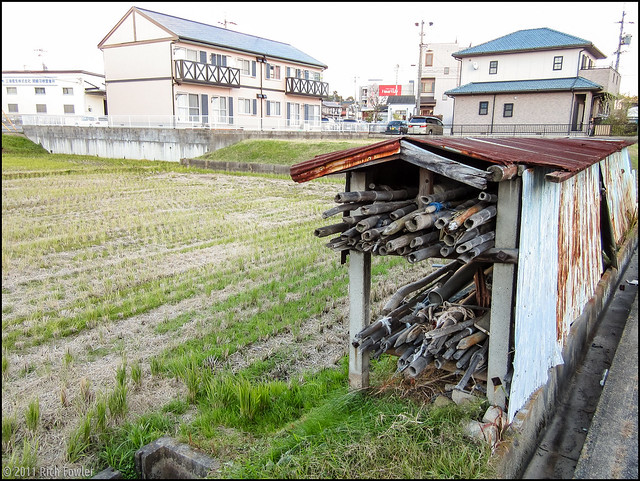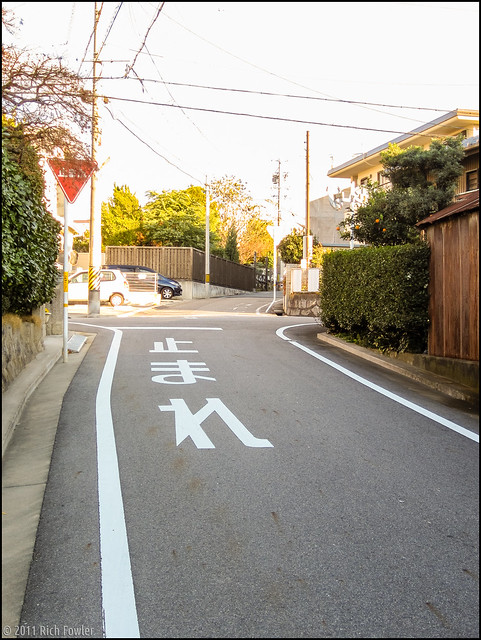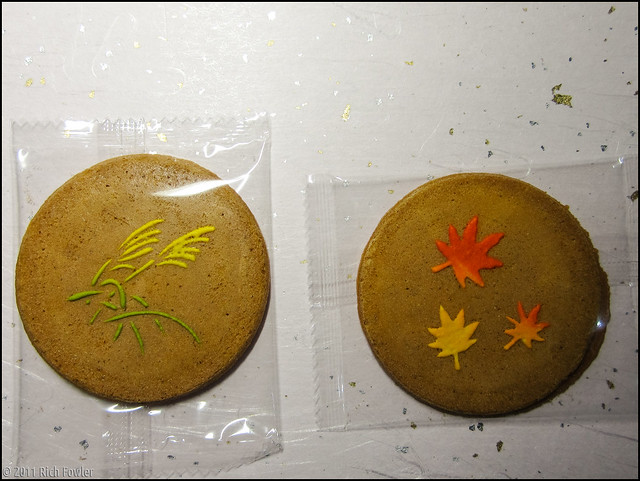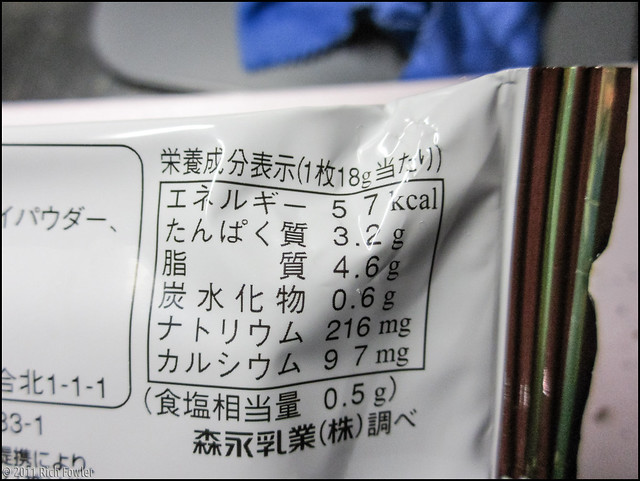In a previous post I talked about James Heisig’s Remembering the Kanji, Volume 1. (RTK1 from here on out.) It’s a really cool book, and I have drunk the Kool-Aid to become a believer in his approach to studying kanji.
Sort of.
First, I must dispel a myth.
Learning kanji is NOT HARD. It’s very do-able. It requires a little forethought, the right materials, and work. Seriously, 150 million people use kanji daily and have no problems with it at all. You have to put in the hours, and you have to be SMART about it.
The division of labor will set you free.
Juggling 3 balls is easier than juggling 7. RTK1 is all about getting you to reduce the number of balls you’re trying to juggle when you learn kanji. By getting one big chunk of learning out of the way, you’re making it easier for your brain to learn kanji.
RTK1 does something really cool. It puts you on the level of all of those Chinese kids who are trying to learn Japanese. When they learn Japanese, they only have 3 balls to juggle, compared to your 7 when tackling kanji.
They see those kanji characters, and in their language, they have a meaning in Chinese.
So for example, they’ll see å· and think, “Oh hey, that’s the character for ‘stream.'” Then they’ll find out that the Japanese pronounce it entirely differently. (In fact, in Japanese, you can take one character and pronounce it 3-4 different ways, depending on how it’s used. ) But they already have a mental hook, and that hook is “stream.”
They can recognize it, they can write it, and they already have a slot in their brain for it and attach a rough meaning to it in their native language.
So really, all they’re stuck doing is learning how to pronounce it.
That’s what RTK1 does for you, you non-native Chinese language speaker! And that is pretty impressive, once you grasp that concept, because it does it for you for about 2,042 characters, if you keep your study habits up. And really, all you’re doing is just juggling the characters in your brain until you can assign Japanese readings to them full-time.
So when you approach kanji in the wild, all you have to learn are the readings.
That’s the huge deal. You’ve already got the other stuff down from RTK1. That’s why I drank the Kool-Aid.
Those English words you’re using to learn them will fade over time. Don’t get hung up on them, or their meanings. The meanings are meaningless, really. They’re just labels.
I finished RTK1 about 11 months ago. Finishing RTK1 takes a lot of effort, and a lot of people feel great when they’ve done it. Congratulations. You’ve achieved something.
Kind of.
I Know Kung-fu!
You’ve prepared your brain to start learning Japanese kanji. BUT you haven’t actually learned any Japanese yet.
At this point, some people sit back and say, “Wow, I know a lot of kanji!” Well, yeah, kind of, but you don’t know any Japanese.
Then they freak out when they realize that.
The rest of us realize that the easy part is over, and now we have to figure out how to learn all of those readings.
You may think, “Crap, what do I do now? I memorized all of these stupid keywords, now how should I learn the actual readings?”
You can get a bad case of paralysis by overanalysis. Why? Well, because you have so many options available to you now, simply because you’re done preparing yourself to learn.
First, you need to know something. Kanji have two readings, the onyomi, or the Chinese reading, and the kunyomi, or Japanese reading. Sounds confusing? It is at first.
Here’s the quick and dirty: you usually use Chinese readings when two or more kanji are hanging together to form a word, and you usually use the Japanese readings when a kanji stands alone, usually as a verb, sometimes as a noun or adjective. Usually. Not always. There are plenty of exceptions.
I’m bringing this up because it’s important.
Now, I’m assuming you’ve finished RTK1 by now, and you’re wondering what to do next. So here are some of your options. (Or at least some of the ones I considered.)
It’s a valid option. You could order Remembering the Kanji, Volume 2, and just proceed on your merry way. Heisig did something pretty smart for RTK2: he took kanji with similar readings and grouped them together when they had similar radicals.
It’s very handy, but… well… see, the thing is, it only works for some kanji, it only works for some readings, some of those readings are obscure (like 1% of the readings of a kanji), and it only works for the onyomi (those Chinese readings where two or more kanji are hanging out).
So its usefulness is limited. Also, the vocab he uses as examples are presented in isolation. There are no example sentences, so you don’t know how to use the words without having to look them up yourself.
Some of the vocab is obscure. We’re talking, stuff I can’t find in my dictionary obscure, because it’s ancient Buddhist stuff obscure.
His approach to kunyomi isn’t very helpful. He devotes one chapter to it, and after reading it 3-4 times, I still don’t get it. It’s way too complicated, in my opinion. It’s taking something simple and making it harder than it needs to be.
In the end, you’ll know a bunch of readings, but I’m not really sure how it’ll help you know any Japanese.
NOTE: If you get RTK2, make sure you download the errata.
Some people choose to do this. I see this as delaying the inevitable. If you jump ahead to RTK3, you can pick up the rest of the kanji, so you’ll have English meanings for 3,007 kanji. Great, but you still don’t know any Japanese. I would do this when you have those 2,042 kanji nailed in Japanese, but that’s me.
The other problem is that these kanji are mostly very obscure.
NOTE: If you get RTK3, make sure you download the errata.
Some people like this series. I’m not too keen on it, because I like lots of example sentences. I like to take those example sentences and dump them in my SRS, because then I have context. I thought Kanji in Context would give me context. Turns out I was only half-right. It gave me context for some, but not all of my kanji, and it was completely random about which kanji got context. Some did, others didn’t, and I never found out why. I felt a little ripped-off, given the price.
So maybe the title should be Some Kanji in Context, But Not All of Them, which is disappointing.
What CosCom did was take 2,001 kanji, put them in order of frequency, divide them up into 3 volumes, printed 2 of them, only made the third one available on CD-ROM, and then gave you 2 great volumes, with an awesome free workbook for the first two volumes available online to people who own the books or the CD.
A printed version of volume 3 is in the works. (Note: as of 8/2011, still no printed version of volume 3… so who knows if it’s ever coming out?)
I think it’s pretty nifty. Volume 1 covers 555 kanji, volume 2 covers another 555, for 1,110 total. Volume 3 comes on a CD with volumes 1 and 2, and picks up the rest, but it lacks example sentences for the last bunch, so you’ll have to find those somewhere else.
The CD version has some benefits: extra vocabulary for each kanji that you won’t get in the books; spoken versions of every sentence for volumes 1 and 2; and you can copy/paste the vocabulary lists into a text file in tabbed format, which is extremely handy for importing into a spreadsheet.
Downside of the CD version: you can’t copy/paste the sentences into your SRS as text. Well, you can copy the images. Perhaps you could copy the images into an OCR and process them there… that would be tedious, maybe faster than messing with scanning the whole book?
Also, still no sentences for the 891 volume 3 kanji. Just lots of vocab. You’ll have to find sentences online. (More on that below.)
But wait, I was just bashing KiC above for not having all of its 2,000 kanji in sentences! Yes, but when Kanji Odyssey (KO) lists a kanji in volumes 1 and 2, it shows the kanji with a whopping three example sentences. KiC didn’t even come close to that number.
The other thing KO does is that it builds on its vocabulary, sentence after sentence. It’s not obvious at first, but over time, you start to see it kick in, and it’s pretty good. The vocabulary is all common stuff you’ll see in newspapers and magazines. It’s not “Bob and Gina are exchange students,” it’s “Our company exports auto parts overseas.” You know, stuff you might actually use if you work in Japan.
Now, after all of that talk about sentences, I don’t use the sentences in KO anymore. I love the vocab lists, but I have come to prefer the sentences in the Yahoo.co.jp online dictionaries, and on ALC’s EIJIRO dictionary, because they’re shorter and easier to put in my SRS. Also, I usually put 2-3 sentences in my SRS for each vocab word.
Downsides? Sure, here’s a list for the TL;DR crowd:
- You only get sentences for 1,110 kanji in the first 2 volumes. You’ll need to figure out what to do with the rest later.
- The sentences are weird sometimes, and dull most of the rest of the time. Par for the course.
- The sentences are on the big side, which can make your cards long and unwieldy. You will need to break them up or look online.
- The grammar will be too hard for newbies, and too dull for advanced students. It’s a vocab book, not a grammar book.
- Not every single vocab word listed gets into the sentences. Every reading gets covered… usually… but not every vocab word that is listed on the side. What you do about it is up to you.
- The vocab learning curve is steep for a while. You’re going to get a LOT of vocab crammed down your throat. It tapers off eventually, but for the first 300-400 kanji, you’re going to be grumbling a lot. Also, the extra vocab in the sentences probably won’t be familiar to you, either. You might want to sort it.
- The sentences don’t fit nicely into the concept of i+1, which I interpret as meaning, “Don’t put a bunch of new crap on your SRS card. One new fact per card, if you can. Two is pushing it.” To get around it, I had to add extra cards with extra sentences from dictionaries to cover the extra vocab. I found that that reinforced the extra vocab, too, because I saw it more often.
- The English translations are a little… odd.
- The sentences can be… weird.
In spite of the downsides, I think it’s the best compromise I’ve found. I don’t have to build any memory palaces or stuff like that. I just plug and chug into my SRS.
And if you don’t like the sentences, you can just follow the word order and find better sentences somewhere else, like in dictionaries or just doing blog searches.
Also, if you sort the sentences or the vocab lists so that you don’t have to learn kanji out of order, you can get some improvements on efficiency.
This is an interesting series I’ve seen some people rave about. It’s a series of 4 books that will get you to the ~1,000 kanji mark. The books focus on lots of drills and exercises to get your kanji ability up to snuff. The work gets increasingly difficult.
What I didn’t like about it: the “copy the kanji 20 times to memorize it” bit in the early volumes. That has been proven to just not work.
What I like about it: the exercises are pretty good. It will make you use kanji, which is useful.
It runs in the $30-$40 range per book. Each book goes over 250 kanji. I would check out the pages at thejapanshop.com’s website, or amazon.com, and click on the book’s image to see a preview of what each volume looks like.
Option 6. Useless Kanji Books
There are a ton of these out there. A lot of them are in English, and will have great titles, like Essential Kanji, and will look incredibly useful, when in reality, they are not anything remotely useful at all. They’re simply books that contain a list of kanji with their onyomi and kunyomi, a vocab word or two if you’re lucky, maybe a stroke order diagram, aaaand… that’s it. A waste of money and trees. You can get that info for free online. (No links provided for useless books!)
Other books similar to Essential Kanji are Kanji and Kana: A Handbook of the Japanese Writing System, and Henshall’s A Guide to Remembering Japanese Characters. Both of which are published by Tuttle.
To be fair, Henshall’s book isn’t without merit. He does provide some tangential etymological info about the kanji, and his own mnemonics. But if you’ve already done RTK1, it’s useless for you. Otherwise, it’s just another book listing kanji.
Well, I suppose if you’re going to study the etymology, Henshall is useful. But really? You’re going to study a word’s etymology when you’re just trying to learn the language? If I was going to teach it or study it as a scholar, then I can see it. Otherwise, it’s a waste of time.
A lot of these books are notorious for something else– they have high ratings on Amazon.com. This should tell you something– most people who review books on Amazon don’t know squat.
Don’t ever buy a book simply based on its Amazon rating. It’s asking for a kick in the head.
It’s a pretty neat little site…well, it was. It used to be free, but not anymore.
It has a pretty decent flash-based Japanese language learning setup based loosely on spaced repetition. You learn with its own modified version of an SRS, with audio and sentences and such. It’s very engaging and entertaining. The use of audio, pictures, and such try to engage as many senses as possible.
It lets you set the amount of kanji you want to tolerate in your sentences from none to full, which is really handy. It even tests against tip-of-the-tongue moments, by measuring the speed of your response. I’d say it’s a good option for building vocab if you don’t want to mess with building your own decks in Anki. The sentences come from a very good source, and the voices are all native speakers.
But it’s no longer free. 1000 yen ($12.50) per month, 800 yen if you go 6 months at a time (4800 yen), 700 yen if you go yearly (8400 yen per year.) Kind of expensive with the yen so high against the dollar.
In Anki, if you search for Core 2k+6k, you can find decks that have all of the first 6,000 vocab words and sentences in iKnow. If you look for Kore in Anki, you can even find a version that’s sorted so you can learn them in an order that’s optimized.
Downsides? Sure.
It’s not free.
I don’t like the site’s multiple-guess approach. A good SRS should be fill-in-the-blank. Multiple-choice is bad, because it makes your brain lazy. Even if there are 10 answers to choose from (which there are), I don’t like it.
I don’t like its SRS spacing, either. It doesn’t feel very robust. It’s hard to explain, but it’s good for those first few short intervals, then it just kind of fades.
It’s not very customizable, either. I much prefer Anki in this regard. Anki lets me get away with a lot. (Especially when I bug the author.)
Anyway, now that it’s pay to play, you don’t have to worry about losing your stuff as long as pay for it.
I figured I would add this option to the list, since some folks like this book as well. It covers about 1,023 kanji which show up on the JLPT level 2 exam. It won’t get you all 2,042, but it is a good start. There aren’t any English translations, and you’re going to need to look up some of the words, simply because you don’t always get readings. It’s a bit odd in that respect.
Again, it’s not perfect, but it is good. You can buy it at BK1 here.
Option 9. Kore/Core 2k/6k/10k
This is one of the most popular options for people learning Japanese now. You can find the decks here and there, and they go by either Kore or Core, and they either have 2,000, 6,000 or 10,000 sentences in them. A lot of those sentences came from iKnow.
As a pre-chewed deck, it’s pretty effective. A lot of people have used it, and report success on the RTK forums. It’s just like learning kanji readings through any other sentence method, though. Some of these decks use pictures/sounds/etc. as well to try to engage more of your brain and help you remember. Sounds like it should work.
Option 10. JLPT Vocabulary List Books +OCR + “Stuff” = Magic!
I’ve been using these lately in a unique fashion. I copied the indexes, scanned and OCR-ed them, and created word lists of all the words the books think will be on N2 and N1. Then I took the word lists, and ran a program to scan through my Anki deck to see which words I already “knew,” and which ones I didn’t. (I’m not going to go over a list of 12,000 words for giggles. That’s what computers are for!)
I took the resulting list of words, and used CB’s excellent EPWING 2Anki program to process my list of words, pluck out 7 or so sample sentences from a few different EPWING dictionaries, and outputted it all into a whopper of a spreadsheet.
Then it’s just a matter of copy/paste into a file I can import into Anki.
Getting the automation bits down is tricky at first, but once I figured it out, it was stupid easy.
Since the programs are always changing, you should consult the RTK forums for these kinds of techniques.
Option 11. Make up your own option 11
I’ve just thought of some of the general options off of the top of my head, and a few of the pitfalls. The reality is that everyone has to figure out what to do next on their own.
The cool thing is that finishing RTK1 will give you the ability to do whatever you want kanji-wise, because as long as you keep juggling those kanji-balls in your brain, you’ll be able to learn new kanji readings with ease.
In the end, it doesn’t really matter which option you pick. Just pick one, and stick with it. If you don’t like it, try something else.
I find I like studying sentences, because I like context. It makes it easier.
I also find I like studying both ways– from kana reading to produce kanji, and from reading kanji out loud to know what the kana are. Some people get more elaborate, and use text-to-speech software and create MP3s of their sentences, but that’s too much work for me, and it doesn’t work over my cell phone web browser. (Okay, I stopped going from Kana -> Kanji. It eats WAY too much time.)
Some people do even crazier stuff, which I’ll post about later. There’s some wild stuff you can do with Anki.
I like Kanji Odyssey, because I like the frequency approach. Someone pointed out that frequency shouldn’t matter, because you’ll learn them all in the end.
Yes and no. In the end I will learn them all, but along the way, knowing the more frequently used ones will let me enjoy a wider range of Japanese language material with greater ease.
More fun = more staying power.
Do whatever works, and change your method if it stops working for you!





